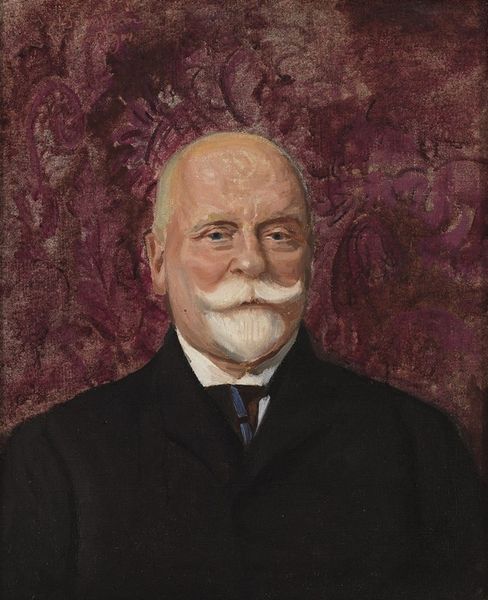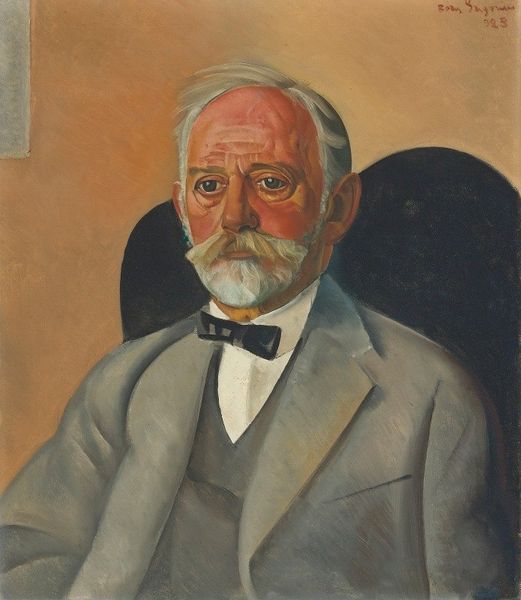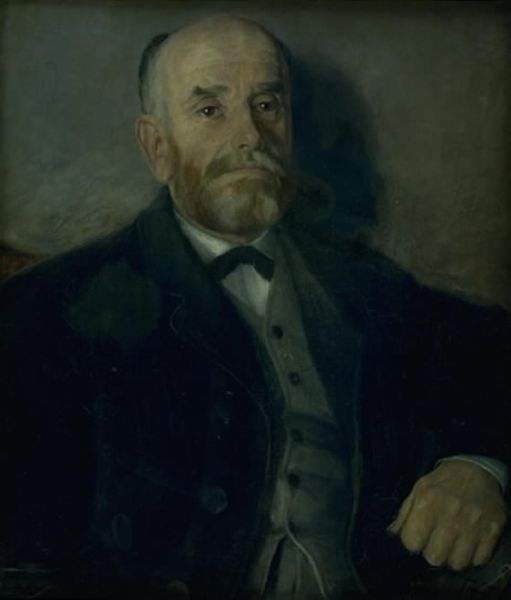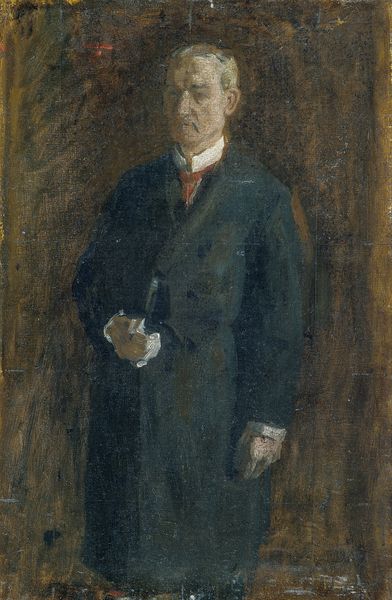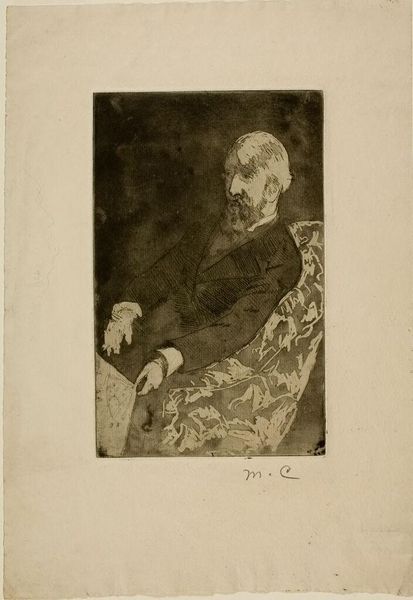
drawing, pencil
#
portrait
#
drawing
#
figurative
#
self-portrait
#
portrait image
#
portrait reference
#
portrait head and shoulder
#
pencil
#
symbolism
#
animal drawing portrait
#
portrait drawing
#
facial portrait
#
portrait art
#
fine art portrait
#
celebrity portrait
#
digital portrait
Copyright: Public Domain: Artvee
Editor: This is Léon Spilliaert’s “Portret van Andrew Carnegie,” made with pencil in 1913. It's incredibly stark...almost haunting. The dark background makes Carnegie seem to float. What symbols do you see present in this portrait? Curator: A pertinent question. The eyes are immediately striking, aren’t they? Almost hollowed. While seemingly unsettling, such starkness may evoke themes beyond the literal, perhaps a stripping bare of earthly wealth to reveal a deeper, existential questioning, hinting at our mortality and its burdens. Is it a straightforward portrait or a memento mori? Editor: A memento mori… That hadn't occurred to me, but with the heavy reliance on symbolism from this time period that makes complete sense. Could the simplicity of the pencil also contribute to that stripped-down feeling, emphasizing the basics of existence? Curator: Precisely! The deliberate choice of medium plays a key role. Pencil, with its inherent vulnerability, allows for erasure, for second-guessing. Look at how the lack of adornment or surrounding context thrusts Carnegie into symbolic, rather than temporal space. How might this image function outside traditional markers of social identity? Editor: By removing the surrounding status symbols, it forces the viewer to confront the subject, in this case Carnegie, on a deeper level. Instead of seeing him as just a wealthy industrialist, we have to reckon with his humanity or lack thereof. Curator: Precisely. Consider how Spilliaert refrains from idealizing the subject, portraying him without the flourish one might expect. By divesting him of readily readable clues, does it alter Carnegie's position in history and cultural memory? Editor: I'd never thought of portraiture that way, as something that isn’t always flattering, something deeper than fame or accomplishment. I see how the stark style encourages a symbolic reading rather than a literal representation of the sitter. Curator: Indeed. Hopefully, it will inform how we consider Spilliaert’s aesthetic choices as visual allegories with psychological dimensions.
Comments
No comments
Be the first to comment and join the conversation on the ultimate creative platform.



